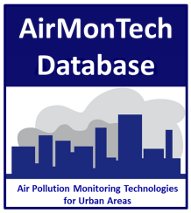About AirMonTech
With increasing requirements for air pollution monitoring in Europe, and a rising number and complexity of available instruments, harmonisation and innovationof air pollution monitoring in Europe is of vital importance. In the short term, harmonisation is needed to ensure comparability of measured concentrations, and their estimated measurement uncertainties, provided by European air pollution monitoring networks. To achieve harmonised air quality data, detailed recommendations on equipment evaluation and selection, standard operating procedures (SOPs) for set-up, operation and calibration, and proofs of equivalence to reference methods are needed.
The necessity for harmonisation is especially important for particles (PM2.5 and PM10). Demonstration of equivalence to the reference methods, and QA/QC procedures for widely used automated PM monitors, are key current issues. In the longer term, the regulatory requirements for both metrics and methods need to be re-examined in the light of improved scientific knowledge (for example relating to health effects) and advances in monitoring technologies.
The aim of AirMonTech is to compile the knowledge and information needed to harmonise current air pollution measurements and to guide decisions about monitoring in the future. The project is executed by a consortium comprising air quality monitoring experts, measurement technique developers and health effect researchers from renowned research institutions and public bodies. Strong links to both urban and regional monitoring networks and European standardization institutions are ensured via direct links to AQUILA, EMEP and CEN.
AirMonTech will gather information on instrument performance, test results, equivalence demonstrations and SOPs, and process them into specifically designed databases. A list of metrics currently involved in the inventory can be found here. Particular emphasis will be placed on methods for real-time monitoring of particles and particle-related proxy variables as well as indices particularly relevant for human health. A roadmap for future urban air quality monitoring including recommendations on existing and new monitoring technologies will be developed and discussed with stakeholders. Opportunities and limitations for the improvement and harmonization of monitoring activities in EU member states will be evaluated in an interactive dissemination process involving all relevant stakeholder groups.
